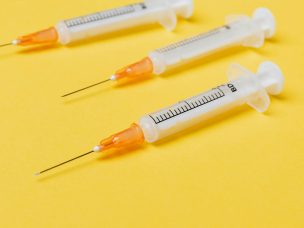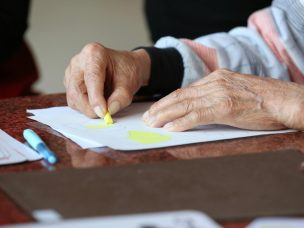The success of treating vitiligo depends on multiple factors, including genetics and the facility’s experience. Surgical treatments like tissue and cellular grafting are the most important therapeutic options for patients with stable vitiligo that don’t respond to other therapies.
Vitiligo is a skin disorder that causes well-defined white patches due to a loss of melanocytes. Its development is complex, and the choice of therapy depends on various factors. Many surgical and non-surgical treatments are available, but surgical treatments are the most important therapeutic tool for patients with stable vitiligo resistant to other therapies. Topical Janus kinase inhibitors have been investigated as a potential treatment option for vitiligo, but none of the treatments guarantee complete and long-lasting disappearance of the disease. Disease stability is the primary criterion for referring a patient for surgical treatment, which can be assessed using clinical assessment criteria, patient self-assessment, and digital imaging of individual skin lesions over the previous 12 months. The Journal of Clinical Medicine has published a study summarizing the clinical evidence regarding the effectiveness of vitiligo treatment methods.
Revitalizing Skin With Suction Blister Epidermal Grafting
Suction Blister Epidermal Grafting (SBEG) is a vitiligo treatment method that involves raising suction blisters from the donor site using negative pressure and transferring them to the recipient site after dermabrasion. The procedure is considered low-cost and effective and can even be performed as a bedside procedure. However, it is time-consuming and may cause discomfort and slight pain for patients. SBEG is also unsuitable for larger areas, uneven surfaces, or palms. Undesirable effects of the treatment include hyperpigmentation, infection, and color mismatch.
Mini-Punch Grafting: A Surgical Solution for Repigmentation
Mini-punch grafting (MPG) is a surgical method used to treat vitiligo. The procedure involves taking a small punch biopsy from the normally pigmented donor site and creating chambers at the recipient site using a punch biopsy tool. Healthy skin from the donor site is placed in the chambers and pressed until the bleeding stops. Repigmentation is observed 2 to 3 weeks postoperatively, and individual spots should coalesce between 4 and 6 months. MPG is suitable for challenging locations, such as lips, palms, soles, and fingers. However, it is time-consuming and may lead to side effects at the donor site, such as cobblestoning. Modifications to MPG, such as the use of platelet-rich plasma injections and silicone gel, can improve the repigmentation results. Weekly transverse needling sessions can also increase MPG efficiency.
Epidermal Cell Suspension – A Promising Treatment for Vitiligo
Epidermal Cell Suspension (ECS) is a method used to treat vitiligo that involves harvesting normally pigmented skin from the thigh or gluteal area and breaking them into small pieces to create a cell suspension. The recipient’s skin is dermabrazed, and the cell suspension is injected evenly over the area. A meshed collagen sheet is placed over the graft site, and the patient returns to the clinic after one week to assess the progress of repigmentation. Phototherapy or topical steroids may be used to stimulate repigmentation.
The ECS procedure has a remarkable effect when applied to large lesions, and undesirable side effects include hyperpigmentation, infections, and skin atrophy. Modifications to the technique, such as mixing hyaluronic acid with the cell solution for injection, can result in a more even distribution of the cells. The addition of growth factors, such as basic fibroblast growth factor (bFGF) and cyclic adenosine monophosphate (cAMP), can improve repigmentation results, but is associated with increased costs.
Follicular Cell Suspension Shows Rapid and Effective Results
Follicular Cell Suspension (FCS) is a hair follicle-based method used to treat vitiligo. It involves obtaining follicular units from the occipital region, washing and incubating them, and collecting the cells in a Petri dish. The cells are then centrifuged to obtain a cell pellet and applied to a dermabraded recipient site. The site is covered with a dressing, and repigmentation is observed after a few weeks. FCS provides more rapid and better repigmentation results than other cellular methods but also requires the most effort and is the most costly. The most common side effects include infection and hyperpigmentation. Adding collagenase type 1 during preparation of the FCS suspension process does not result in significantly improved repigmentation.
The success of a vitiligo treatment method depends on various factors, such as genetic predisposition and the facility’s experience. Cellular methods, especially ECS, are increasingly popular for treating extensive lesions. FCS may become a popular method in the future. ECS and MPG are recommended for treating acral bony sites, and research is needed to investigate modifications to improve repigmentation chances following surgery. Dermoscopy is becoming more important in assessing vitiligo patients to predict the likelihood of repigmentation.
Source:
Grochocka, M., Wełniak, A., Białczyk, A., Marek-Jozefowicz, L., Tadrowski, T., & Czajkowski, R. (2023). Management of Stable Vitiligo—A Review of the Surgical Approach. Journal of Clinical Medicine, 12(5), 1984. MDPI AG. Retrieved from http://dx.doi.org/10.3390/jcm12051984









